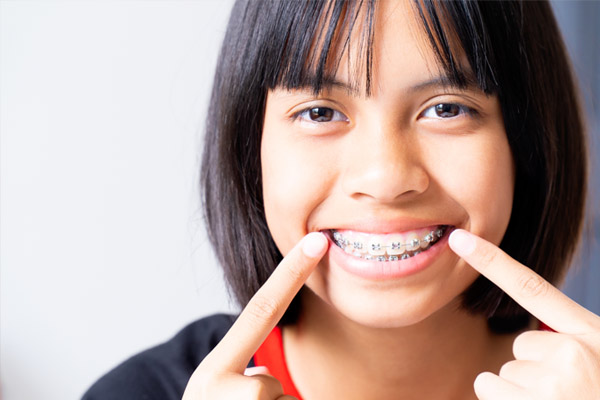
Parents often wonder when it’s the right time to take their child to see an orthodontist. Some wait until all the adult teeth have come in. Others may wait for their dentist to recommend it. While these instincts aren’t wrong, there is a recommended window that ensures your child gets the best possible results with the least amount of stress.
Understanding when to schedule that first visit can have a lasting impact on your child’s oral health. Early evaluations don’t always lead to immediate treatment, but they allow orthodontists to catch developing problems before they get more complicated.
The ideal age for an initial evaluation
The American Association of Orthodontists recommends that children have their first orthodontic evaluation by age 7. This doesn’t mean every child will need braces right away, but it allows the orthodontist to assess how the teeth and jaws are growing.
At age 7, most children have a mix of baby and adult teeth. This stage offers a clear picture of how their mouth is developing. Orthodontists can identify issues such as crowding, misalignment, or bite irregularities that may not be visible on the surface.
Why age 7 is not too early
At first glance, age 7 might seem young. After all, children are still growing and changing rapidly. But that’s exactly why this age is ideal. During this time, the bones are more flexible and easier to guide. Intervening early, when necessary, can help reduce the need for more invasive treatment down the line.
Some common concerns that can be identified early include:
- Crossbites
- Overbites or underbites
- Excessive spacing
- Crowding
- Early or late loss of baby teeth
- Jaw growth problems
Identifying these issues doesn’t always mean starting treatment right away. In many cases, orthodontists will simply monitor the child’s development until the time is right.
Signs that may call for an earlier visit
Even before age 7, some signs may point to the need for an orthodontic checkup. If you notice any of the following, it’s worth discussing with your child’s dentist or scheduling a direct visit with an orthodontist:
- Difficulty chewing or biting
- Speech issues tied to tooth placement
- Frequent thumb-sucking past age 4 or 5
- Teeth that stick out or are noticeably crooked
- Clicking or popping in the jaw
- A bite that doesn’t come together evenly
These signs don’t always mean there’s a serious problem, but they do suggest the need for a closer look. Early evaluation gives orthodontists a better opportunity to shape the developing smile.
Benefits of early orthodontic evaluation
Early assessment provides more than just peace of mind. It opens the door to what orthodontists call Phase 1 treatment. This is a limited-time intervention that can help create space in the mouth, guide jaw growth, or reduce harmful habits like thumb-sucking.
Phase 1 treatment isn’t needed for every child, but when it is, it can:
- Help permanent teeth come in more easily
- Prevent damage to protruding teeth
- Reduce the risk of crowding
- Improve facial symmetry
When early treatment is successful, it often shortens the time your child may need braces in the future—or eliminates the need altogether.
What happens during the first visit
A first orthodontic visit is usually simple and stress-free. The orthodontist will look at your child’s teeth, jaw alignment, and bite. X-rays and photographs may be taken to get a more complete view of the situation.
After the evaluation, you’ll receive clear information about what your child may need, either now or in the future. If no treatment is needed at the time, your child may be placed on a monitoring plan. This means occasional checkups to track development and plan the best time to begin any treatment, if needed.
Braces aren’t the only option
When most people think of orthodontics, they picture metal braces. While braces are still common and highly effective, they aren’t the only solution available.
For younger children, early treatment may involve removable appliances, space maintainers, or simple behavioral guidance. These tools can help correct small problems before they become bigger ones.
For older children and teens, clear aligners like Invisalign may be an option. These are more popular among patients who prefer a less noticeable form of treatment. However, not every case is a candidate for aligners, so an orthodontist will evaluate what’s best for your child’s needs.
Orthodontic care is about more than straight teeth
A healthy smile isn’t just cosmetic. Misaligned teeth and jaw issues can lead to long-term problems with chewing, speaking, and oral hygiene. Crowded or crooked teeth can be harder to clean, increasing the risk of cavities and gum disease.
Orthodontic care also improves self-esteem. Many children and teens feel more confident when they’re happy with their smile. Addressing concerns early on helps them avoid years of feeling self-conscious.
Every child is different
It’s important to remember that every child’s development is unique. Some children will show early signs of alignment issues, while others may not need any orthodontic care at all.
The goal of early evaluation isn’t to rush into treatment—it’s to prepare. Having a plan allows you and your child to approach the process with confidence and understanding.
Conclusion
If you’re unsure whether your child should see an orthodontist, it’s always better to ask than wait. Most orthodontists offer consultations that help you make informed decisions without any pressure.
In Mississippi, access to orthodontic care is growing, with more options available in both urban and rural communities. Whether you live in Jackson, Tupelo, or along the Gulf Coast, you can find local practices that specialize in early orthodontic evaluation.
Taking the step to schedule that first visit doesn’t mean your child will walk out with braces. It simply sets the foundation for a healthier smile and gives you the guidance you need at the right time.
Start the conversation early and stay informed. Your child’s future smile will thank you.